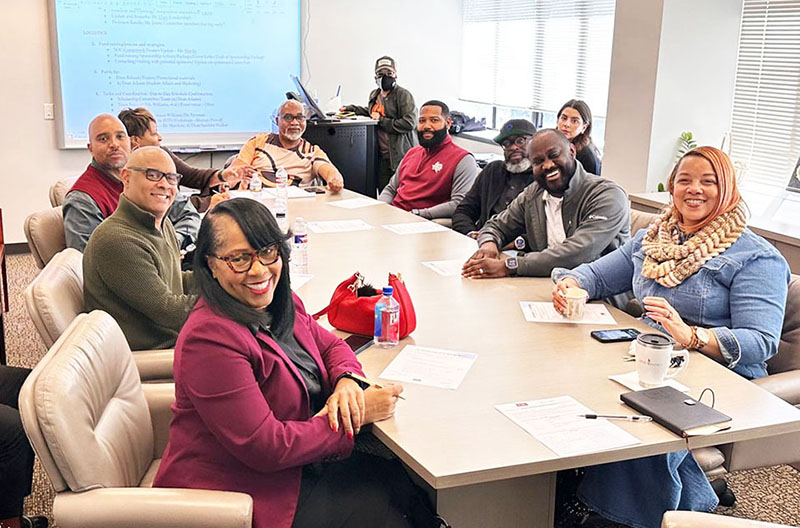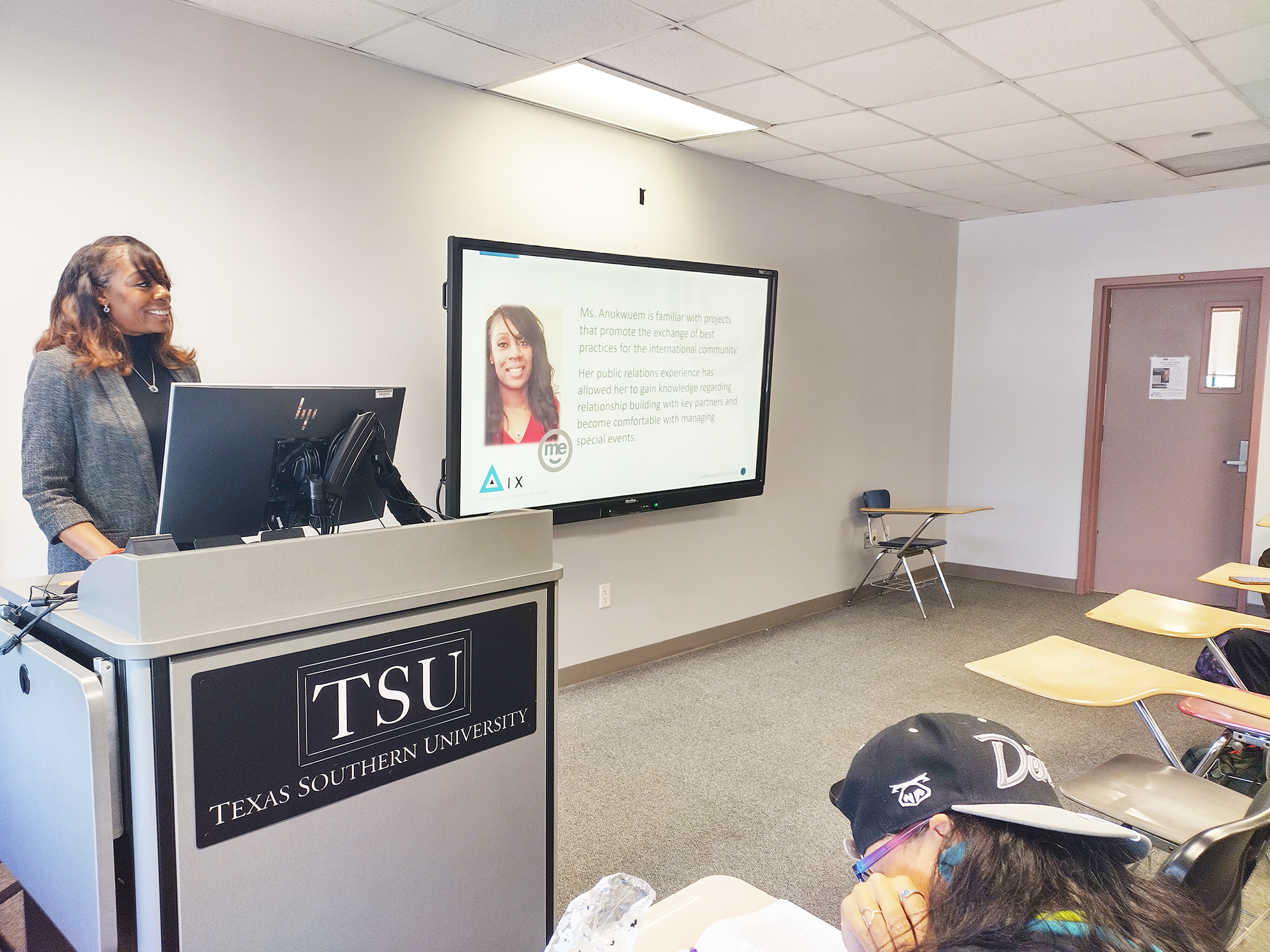Guardian Scholar
Order of executive arrogance—how do I explain Donald Trump to my students?

Education
TSU Announces 2024 Annual Communication Week

TEXAS INTERNATIONAL GUARDIAN, HOUSTON, TX – The representation of diverse racial and ethnic groups, as well as sexual and gender identities in the media, is critically important because it accurately shapes decency, fairness, and unity in the community. When media lacks or portrays insensitive representations, it can perpetuate harmful stereotypes and discrimination, further marginalizing these identities.
The School of Communication (SOC) at the Texas Southern University (TSU) has announced its 2024 Commweek, signifying the 42nd Intercultural and Communication Conference. Themed “Amplifying Diverse Voices in Media and Communication”, the conference will be held April 8 – 12, 2024, and will culminate with an Awards Gala on Friday, April 12, 2024, at the University’s Tiger Room.
Ensuring a diversity of voices in the media requires holistic monitoring systems and the wider application of target-based measures for both public and private media. Amplifying diverse perspectives can instigate a richer and more inclusive media landscape that benefits the entire populace. The Intercultural Communication Conference provides a forum for scholars, students, professionals, and civic-minded leaders to explore topics with cultural, political, economic, and social implications as well as communication dynamics. But the theme is necessary and also, it is coming at the right time.
The challenges posed by a lack of diverse voices in media and communication can be seen across social, political, economic, and cultural spheres of influence. These issues can influence the views represented in news coverage and dissemination. Indeed, the diversity of perspectives is key to creating a more inclusive and equitable society.
According to Dr. Chris Ulasi, the Interim Dean of the School of Communication, “The 2024 event will be special because we are equally raising scholarship funds for gifted and economically disadvantaged students in the School of Communication. Traditionally, a majority of our students rely on some form of financial assistance to fund their education. This is why I am using this opportunity to appeal to individuals, corporations, and community organizations to support this cause.”
According to a release made available to our newsroom, proceeds from this event will,
- Help SOC students break down financial barriers while pursuing their academic prospects.
- Help SOC students cover the cost of tuition, textbooks, and other educational expenses.
- Help SOC students supplement the cost-of-living expenses such as housing, transportation, and food.
- Create retention possibilities for students who might drop out for financial reasons.
- Act as incentives and encouragement to students in general.
- This financial sponsorship will be a catalyst for expanding SOC’s ongoing professional relationship with corporate businesses, community organizations, and individual sponsors.
Dr. Anthony Ogbo, co-chaired by Professor Ladonia Randle, and Ms. Michele Jones, is joined by a team of very engaging and supportive members who meet regularly to finalize the machinery for a successful event. According to Dr. Ogbo, “The 2024 Commweek is expected to draw a line-up of dignitaries from the business, academic, and government sectors. For instance, the City of Houston’s Vice Mayor Pro-Tem, Council Member Martha Castex-Tatum will lead the conference opening ceremony on Monday, April 8. Also, Dr. Kathleen McElroy, renowned Journalist and Professor at the School of Journalism and Media at The University of Texas at Austin will lead the opening session of the intercultural conference on Thursday, April 10.”
The School of Communication (SOC) at Texas Southern University is a transformational, interdisciplinary academic school with four departments and two graduate programs: Communication Studies; Entertainment Recording Industry Management (ERIM); Journalism; Radio, Television, and Film (RTF); and Master of Arts (MA) in Communication and Master of Arts (M.A.) in Professional Communication and Digital Media (PCDM). For 48 years, the school has been at the forefront of training culturally responsive professionals and scholars who can navigate urban and international settings with a deep sense of inclusivity and an understanding of historical legacy.
Texas Southern University possesses an impressive array of more than 100 undergraduate and graduate programs and concentrations, a diverse faculty, 80-plus student organizations, and an extensive alumni network comprised of educators, entrepreneurs, public servants, lawyers, pilots, artists, and more, many of whom are change agents on the local, national and international stage. Nestled upon a sprawling 150-acre campus, Texas Southern University is one of the nation’s largest historically black universities.
Education
AIX Founder, Linda Anukwuem Addresses Texas Southern Students on Career Prospects

“Graduating students must be prepared to reconcile or strike a balance between their values and the culture of the organizations they aspire to. Some corporate cultures require a certain look or presentation to suit specific expectations.”
These are one of the few takeaways when the founder and the Chief Executive Officer of the Houston-based AIX Firm, LLC., Linda Anukwuem visited the School of Communication (SOC) of Texas Southern University (TSU) on October 31, 2022.
Ms. Anukwuem addressed the Media Marketing and Management class of Radio, Television, and Films (RTF) students on career choices and prospects, sharing relevant workforce preparation tips. “It has always been my intention to share this information with students to enable them to get prepared for the ever-challenging corporate arena,” said Ms. Anukwuem, who is also an Executive Consultant with Quanten Consortium Angola, LLC., a global oil and gas exploration firm.

Before joining Quanten Consortium Angola, LLC., Ms. Anukwuem served as the Chair for the City of Houston’s Mayor’s International Trade & Development Council for Africa (MITDC-Africa) under Mayor Annise Parker as well as chaired the Arts, Culture and Community Relations Committee.
In the lecture-themed “Processional Prospects”, Ms. Anukwuem addressed the Importance of networking and how good interaction could invoke viable spaces that can create a successful path to success. Ms. Anukwuem also discussed the distractive challenges of the career journey. “Every failure became a lesson learned to prepare for the next opportunity,” she advised.

Special guest, Linda Anukwuem (left) and class professor, Dr. Anthony Ogbo
The class professor, Dr. Anthony Ogbo described the lecture as “a perfect fit” for students who are eager to learn about better career prospects. “Sharing real-world workforce realities is a major part of our course objectives and teaching standards, and this event dovetails that purpose,” Dr. Ogbo said.
Linda attended the University of Houston, earning a Bachelor of Science degree in Sociology. In her professional career, she worked as an accountant with Bracewell & Guiliani, LLP, and United Airlines. Because of her hard work and professional acumen, she was featured in the eighth edition of Who’s Who in Black Houston.



TSU’s School of Communication, originally established in 1975 and consisting of Journalism, Telecommunications, Speech, Theatre, and Communicative Disorders, was reduced to a single department in 1979 in response to university-wide management efficiency and cost containment concerns.
TSU’s Radio, Television, and Film program prepare students for the production and critical studies of radio, television, film, and new media, offering them a balanced curriculum that provides integrated study and training in the art and business of electronic media.
For a tour of the School of Communication facilities, contact Kevin Adams (kevin.adams@tsu.edu), Assistant Dean for Student Services 713-313-7408
Education
OMG: 13-Year-Old Black Girl Accepted Into Medical School

At 13 years old, Alena Analeigh Wicker has accomplished more academically than many adults. According to 12 News, the child prodigy is currently enrolled in undergraduate programs at both Arizona State University and Oakwood University, an HBCU in Huntsville, Ala. However, the young scholar revealed she has been accepted into medical school.
“Today I’m just grateful. I graduated High school LAST YEAR at 12 years old and here I am one year later I’ve been accepted into Med School at 13,” she wrote on Instagram, sharing a screenshot of her official acceptance letter.
Her caption continued, “I’m a junior in college. Statistics would have said I never would have made it. A little black girl adopted from Fontana California. I’ve worked so hard to reach my goals and live my dreams.Mama I made it. I couldn’t have done it without you. You gave me every opportunity possible to be successful.”
The news outlet reported Wicker has shifted her career goals from engineering—with dreams of working for NASA—to medicine after being inspired during a trip abroad in Jordan.
“It actually took one class in engineering, for me to say this is kind of not where I wanted to go,” she explained to the outlet. “I think viral immunology really came from my passion for volunteering and going out there engaging with the world.”
“What I want from healthcare is to really show these underrepresented communities that we can help that we can find cures for these viruses.”
Wicker continued, “What I want from healthcare is to really show these underrepresented communities that we can help that we can find cures for these viruses.”
As she continues her academic feats, Alena Analeigh Wicker is set to attend the University of Alabama at Birmingham Heersink School of Medicine and is on track to be finished by the age of 18 years old. She is inspired by her foundation, The Brown Stem Girl, which she created to provide an outlet for girls of color in stem through engagement, empowerment, and education.
“I’ve always thought, Why can’t girls of color do STEM and pursue jobs in STEM like others? I’ve always believed that girls of color can do anything in STEM that they put their minds to, so I created the Brown STEM Girl to give STEM opportunities to girls of color,” she told EBONY when recognized as one of the outlets 2022 HBCU STEM Queens.
-

 Column6 days ago
Column6 days agoNavigating Bias and Ethics in AI-Powered Cybersecurity: The BRACE Framework Approach
-

 News1 week ago
News1 week agoTrump trial update: Trump rebuked by judge for speaking during jury selection — and 7 jurors are seated
-

 Lifestyle1 week ago
Lifestyle1 week agoBody of O.J. Simpson to be cremated this week; brain will not be studied for CTE
-

 Education1 week ago
Education1 week ago11 Communication Students Awarded Scholarships at TSU’s Commweek
-

 Africa1 week ago
Africa1 week agoDonors raise more than 2 billion euros for Sudan aid a year into war
-

 Africa1 week ago
Africa1 week agoSA users of Starlink will be cut off at the end of the month
-

 News1 week ago
News1 week agoNigeria: chibok abduction anniversary spurs demands for justice
-

 News1 week ago
News1 week agoNigeria suspends permit of 3 private jet operators


